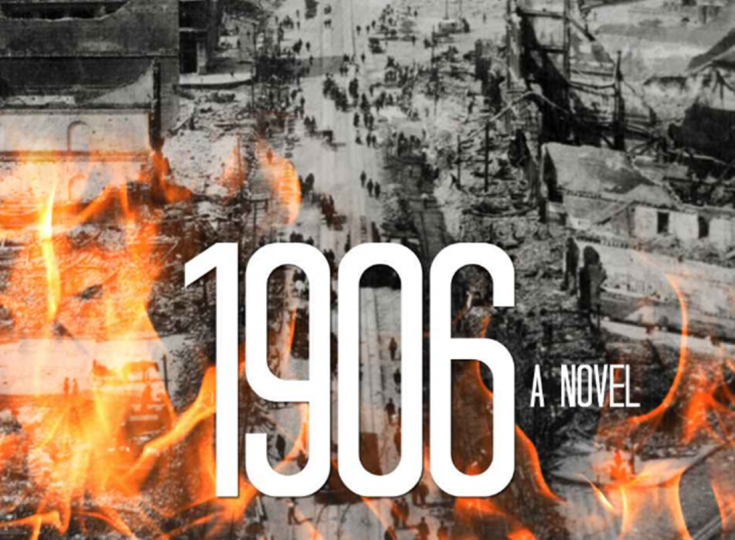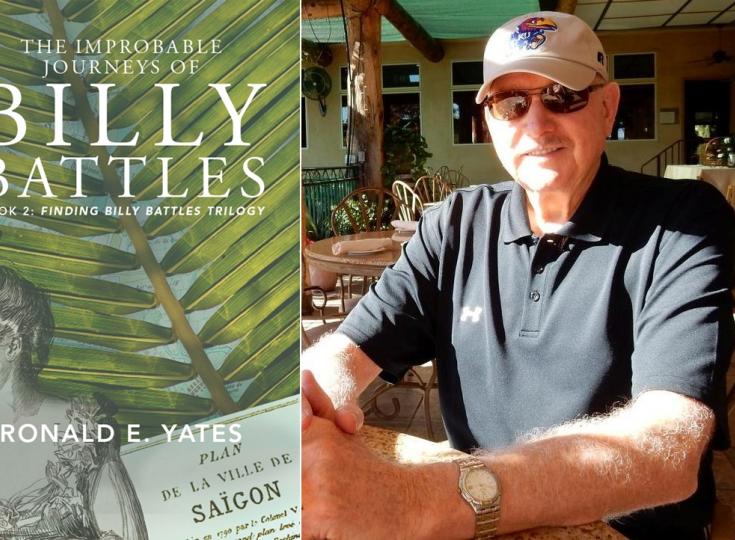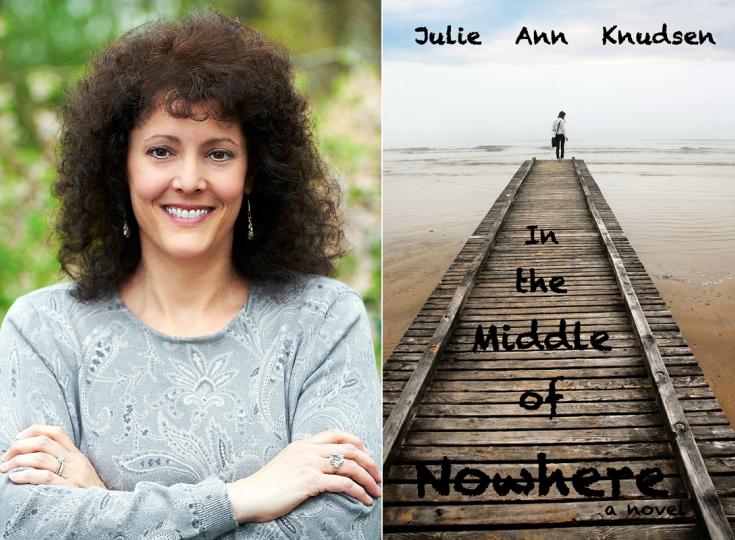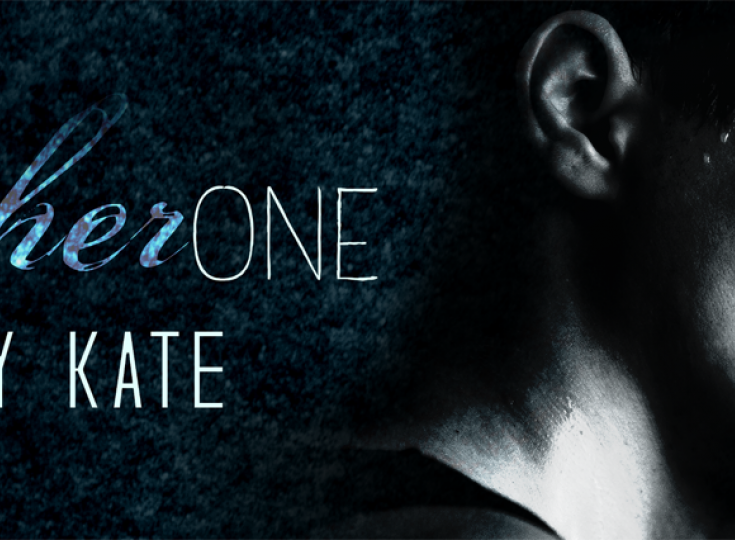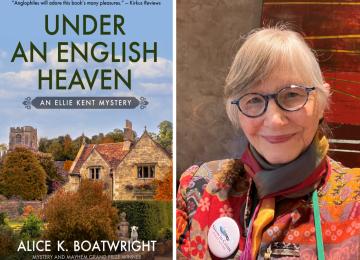Eugene K. Garber - An Interesting Anti-Hero, a Twisting, Supernatural Plot, and a Dark Setting
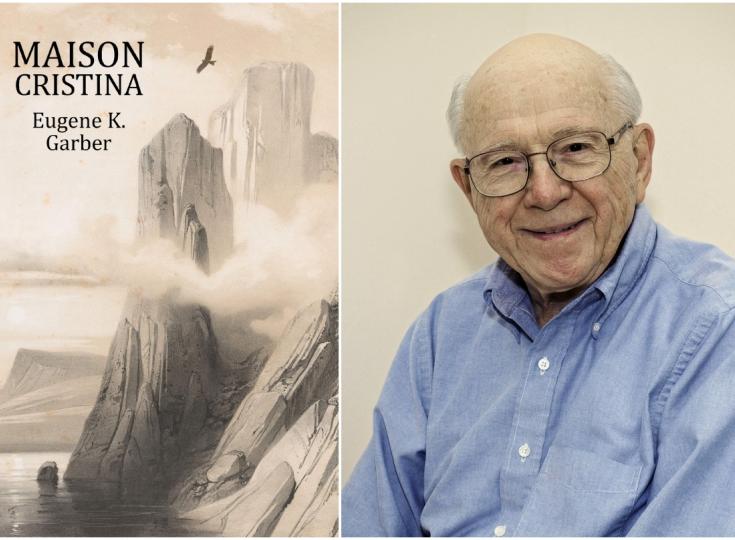
Eugene K. Garber is the author of seven previous works of fiction including The Eroica Trilogy based on hypermedia webwork, EROICA, created with eight other artists. His fiction has won the Associated Writing Programs Short Fiction Award and the William Goyen Prize for Fiction sponsored by TriQuarterly. His stories have been anthologized in The Norton Anthology of Contemporary Fiction, Revelation and Other Fiction from the Sewanee Review, The Paris Review Anthology, and Best American Short Stories. He has won awards from the National Endowment for the Arts, The National Endowment for the Humanities, and the New York State Council of the Arts. He is a Distinguished Teacher Emeritus at the University at Albany, where he served as Chair of English, Associate Director Pro-Temp of the New York State Writers Institute, and Associate Vice President for Academic Affairs. As our Author of the Day, he tells us all about his book, Maison Cristina.
Please give us a short introduction to what Maison Cristina is about.
Maison Cristina asks a question: can two very different people, badly damaged by their pasts, bond together and redeem themselves? What if this redemption were to be attempted solely through storytelling? Would that be improbable, even impossible?
What inspired you to write about demon-haunted halls?
Demons appear in much of my work. They fascinate me because they are fundamentally ambiguous, either destructive or enlivening. An example of a purely destructive demon appears in Thomas Mann’s Death in Venice, an enlivening one in Hermann Hesse’s Demian. Which, or of what mixture, is Vogt in Maison Cristina? I leave that for the reader to decide.
Tell us more about Peter Naughton. What makes him tick?
Naughton is in love with words and the way in which words can be put together to make stories. He imagines that he can tell the story of his own life, control it with words. When confronted by the harsh reality that this purely imaginative act of self-construction will not work, he suffers deeply; he begins, at least partially, to confront the actual world around him.
Why did you pick an asylum as the backdrop for your story?
Maison Cristina is an asylum, but more. It is a habitation of the Spirit run by four women of deep faith. Sister Claire, Naughton’s intellectual equal and spiritual superior, will try to help him redeem himself and his fellow patient Charlene, a young woman so deeply damaged that she has become essentially catatonic.
Besides writing, what other secret skills do you have?
I am an equilibrist. I can walk the tightrope of faith over the pit of Nothingness by artful positioning of my toes and extension of my arms. I am like Phillipe Petit between the twin towers of the World Trade Center. I refuse to fall. I refuse to come back to a safe ledge. The Twin Towers are gone, but we are still up there.
Interesting cover. Tell us more about how it came about.
The cover is related to the fact that several of the stories Naughton tells Charlene involve traversing high places, unsuccessfully, the very definition of classic tragedy, a fall from a high place. But Naughton wants to teach Charlene that she can fly, that in her flying she may learn the skills of predatory birds and avenge the crimes that have been committed against her as a young woman. The cover was chosen from several possibilities. I insisted that the eagle be added.
In which way is Peter Naughton an anti-hero?
You can read Naught in one of two ways. Either he is a lifelong screw-up and even a criminal who is essentially irredeemable and who leaves the novel on his way to self-destruction. Or through his narrative ministrations to Charlene, he has redeemed himself as a healing storyteller. Readers will decide on the trajectories of Naughton and Charlene as they may be extended beyond the end of the novel.
What was your greatest challenge when creating this story?
My work in the past has tended toward short narrative. You might say, to use the terms of track and field, I am inherently a sprint man. But the long arc of redemption required by the psychology and theology of Maison Cristina required a longer course than I am perhaps suited for. I managed this by creating the novel as a kind of tapestry with four major threads: the stories Naughton tells Charlene, the philosophical and religious conversations Naughton has with Sister Claire, the flashbacks that reveal the dark passages of Naughton’s past, and the visits from Vogt that both tempt and illuminate.
Do any of your characters ever take off on their own tangent, refusing to do what you had planned for them?
There are two very comical characters in the novel, a demented woman who imagines that she is descended from the famous Trask railroad family, and Gerrity, a man who seems to have devolved from the human to the amoebic and must now work his way back up the evolutionary chain to humanity. The moment either of these characters stepped on stage I just watched and listened. I never knew exactly what madcap things they would say or do, but oddly in the end I saw that in their own wacky way they were also, like Naughton and Charlene, trying to work out their redemption.
Is there an underlying message you wish to relay about basic human nature through your characters?
I think I would prefer underlying exploration to underlying message, because if a writer already knows how everything is going to come out and what it means, he/she is writing an allegory. There are some great allegorical writers—Dante, Spenser, Bunyan—but I was never so sure of my meanings. Here is an example of what I mean by exploration. Naughton tells Charlene strange dark stories. That seems counterintuitive. Shouldn’t healing stories be full of sunlight and flowery meadows? No. I knew the stories had to be dark to do their work. Why? Let the reader discover story by story how they work paradoxically as anodyne to whatever it is that Charlene has suffered.
Do you have a favorite line from the book, and can you explain what that line means to you?
One of my Amazon reviewers quotes from the book as follows: “A story can help you hide something from yourself. It might even steal from you the real narrative of your life. Or it might be the challenge required for you to save yourself.” This seems to me exactly the set of existential possibilities confronting Naughton as he tells Charlene, and himself, the stories that are to steal, or reveal, or heal. Which?
Do you have any interesting writing habits? What is an average writing day like for you?
I used to write religiously early every morning. That is no longer possible due to my current circumstances, so I write when patches of time shine through the clouds. One new ability I have is to conceive a scene, map it out to a degree, or just hit upon some promising phrase that will blossom—this while about some other task.
What are you working on right now?
I am working on a probably impossible task—to yoke fictively the 15 panels of Barnett Newman’s massive work, The Stations of the Cross, to the text and background of the traditional narrative of the Via Dolorosa. The challenge is to make a work of highly abstract modern visual art enter into a dynamic relationship with a centuries-old narrative of suffering and death. One is a work deriving from Judaic and existentialist traditions of human suffering, the other from New Testament accounts leading toward transcendence.
Where can our readers discover more of your work or interact with you?
My website is http://www.eugenekgarber.com/ My Amazon author page is
https://www.amazon.com/Eugene-K-Garber/e/B001JOZUNS/ref=dp_byline_cont_…
A YouTube interview centering on Maison Cristina can be found at https://www.youtube.com/results?search_query=eugene+k.+garber
